Chinese Name: 成都博物馆 Pronunciation: Chéngdū Bówùguǎn
Building Time: 1958
Best Visiting Season: All seasons
Recommended Time for Visit: 2-3 Hours
Occupied Area: About 11,333 square meters
Address: No.1 Xiaohe Street, Qingyang District, Chengdu, Sichuan Province
Building Function: Protecting and exhibiting cultural relics of Chengdu to carry forward Chinese traditional culture
1. Visitors can make an appointment to visit in the next six days from the next day on the official website(http://ticket.cdmuseum.com) or the Wechat official account platform (Wechat ID: cdmuseum).
For example, you can make an appointment from December 2 to 7 on December 1, but one day during this period is on Monday (the museum is usually closed on Mondays), then you can make an appointment from December 2 to 8.
2. Visitors with an appointment can enter the museum by scanning their ID cards and QR codes received after the appointment.
3. Visitors without an appointment can enter the museum with Health Code after getting the ticket by showing valid passports and valid ID cards at the ticket office window.
1. Entering is not allowed after 16:30.
2. Closed on Mondays (except statutory holidays, Chinese traditional holidays, and National Day golden weeks), Chinese New Year’s Eve, and New Year’s Day of the Chinese lunar calendar.
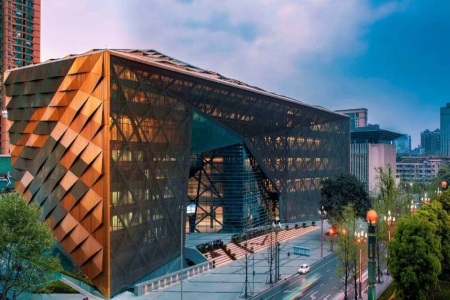
Chengdu Museum is a non-profit public institution affiliated with the Chengdu Municipal Bureau of Culture, Broadcast-TV, and Tourism. It is located at the west of Tianfu Square and adjacent to the Sichuan Provincial Library, Sichuan Art Museum, Sichuan Science and Technology Museum, and Jincheng Art Palace (“Jincheng” is an old name of Chengdu). Chengdu Museum, along with these institutions, has made contributions to building a cultural center at Tianfu Square.
Chengdu Museum covers an area of about 11,333 square meters and the total building area is about 65,000 square meters. What is more, the exhibition area is almost 20,000 square meters. According to the curator, Chengdu Museum is a comprehensive modern museum, and it is expected to play a leading role in China even to be a world-class cultural institution.
Chengdu Museum holds a total of almost 200,000 pieces of collections, including bronze ware, gold, and silverware, portrait bricks, stone carvings, ceramics, calligraphy and paintings, furniture, shadow figures, puppetries, paintings about Taoist or Buddhist rites, masks, wood carvings, and so on. The exhibits on display reflect the long history from the Neolithic Age (more than 10,000 years before present) to the Republic of China period (1912-1949).
The main building of the Chengdu Museum includes two parts: the south tower and the north tower. The south tower is primarily for administration while the north tower is designed for exhibitions. The over-ground part of the south tower comprises an office area and scientific research area, and the underground part is utilized as a lecture hall or multifunctional hall.
There are six floors in the north tower. The first floor comprises the lobby, Video Hall, and Special Exhibition Hall. The second and third floors exhibit the History and Culture Display of Chengdu (Ancient Times), while the fourth floor exhibits the History and Culture Display of Chengdu (Recent Historical Period) and History and Culture Display of Chengdu (Folk Customs). The fifth floor is an exhibition hall for Chinese shadow play and puppetry of China.
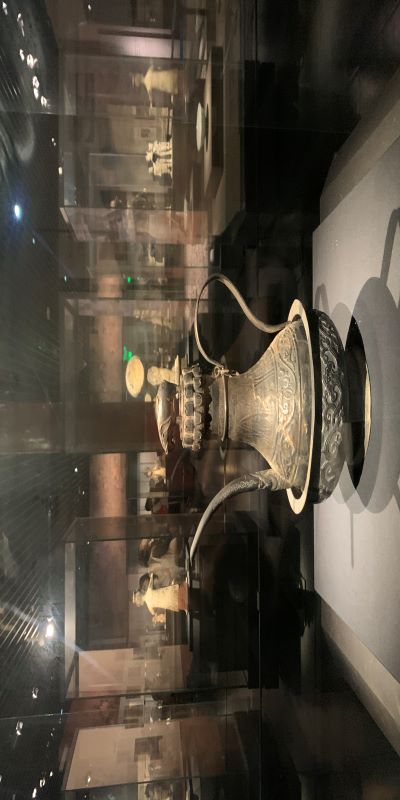
Besides, the basement floor is designed to hold temporary exhibitions and a permanent exhibition themed on Man and Nature: Donations from Kenneth E. Behring. Kenneth E. Behring--an American charitarian and this exhibition is the first exhibition themed on nature. There are more than 300 pieces of animal specimens on display. This exhibition aims to demonstrate the characteristics and stories of various species and ecosystems on the different continents and illustrate the relations between man and nature.
In addition to permanent, temporary, and special exhibitions, Chengdu Museum also hosts online exhibitions on its official website (https://www.cdmuseum.com). On the website, visitors could also experience a mysterious journey to the museum.
Chengdu Museum is a cultural institution. It provides multiple public cultural services and facilitates the coordinated development of the economy and society. In the future, it will devote more efforts to cultural relics protection, exhibitions, education, scientific research, publications, and foreign exchanges to build itself a world-renowned metropolitan museum.
On September 15, 1958, the Chengdu Municipal Government established the Preparatory Committee of the Chengdu Chorographic Museum, which was later renamed Chengdu Municipal Museum. It was built at the Daci Temple.
In 1974, the Chengdu Municipal Bureau of Culture established the Chengdu Cultural Relics Administration of Chengdu City and the Wenshu Monastery (located at Daci Temple) served as the official area for resuming the work related to cultural relics protection of the original Chengdu Chorographic Museum.

On October 1, 1984, Chengdu Municipal Museum was officially opened to the public at the Daci Temple.
In December 2004, Chengdu Municipal Museum was relocated from the Daci Temple, and Qintai Building was utilized as the temporary office building. The staff established a database for recording and archiving the original and new collections of cultural relics.
In May 2008, the planning model of the new Chengdu Museum was launched at the Municipal Planning Exhibition Center for 30-day publicity. The plan was praised by the public.
In July 2009, the 6th Director’s Meeting of Chengdu Municipal Planning Commission approved the improved architectural design scheme of the new Chengdu Museum.
In January 2010, the Chengdu Development and Reform Commission ratified the project application. The construction of the new Chengdu Museum started.
On September 15, 2016, Chengdu Museum was officially opened to the public.
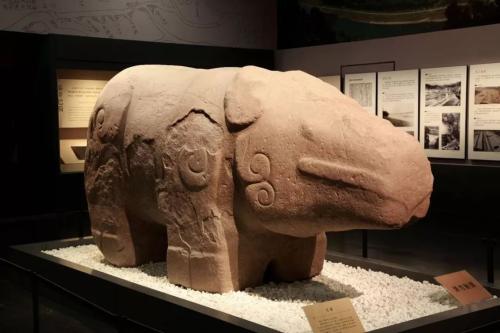
The Stone Rhinoceros is the treasure of Chengdu Museum. It was unearthed at the east of Tianfu Square in 2013. Its history can date back from the Late Warring States Period (475BC-221BC) to the Han Dynasty (202BC-220AD). It is said that Stone Rhinoceros played an important role in protecting people from floods. Especially, it might be one of the Stone Rhinoceros used by Li Bing (a great engineer on water conservancy project during the Warring States Period).
It is 3.31 meters long, 1.38 meters wide, 1.93 meters high and weighs about 8.5 tons. The Stone Rhinoceros is in the posture of standing up. Its body is strong, and its four legs are short and thick. What is more, there are rolling cloud patterns carved on its jaw, front legs, and the main body. The whole image is so cute that the local people call it “Meng Niuniu” (means “so cute rhinoceros”), despite its huge body.
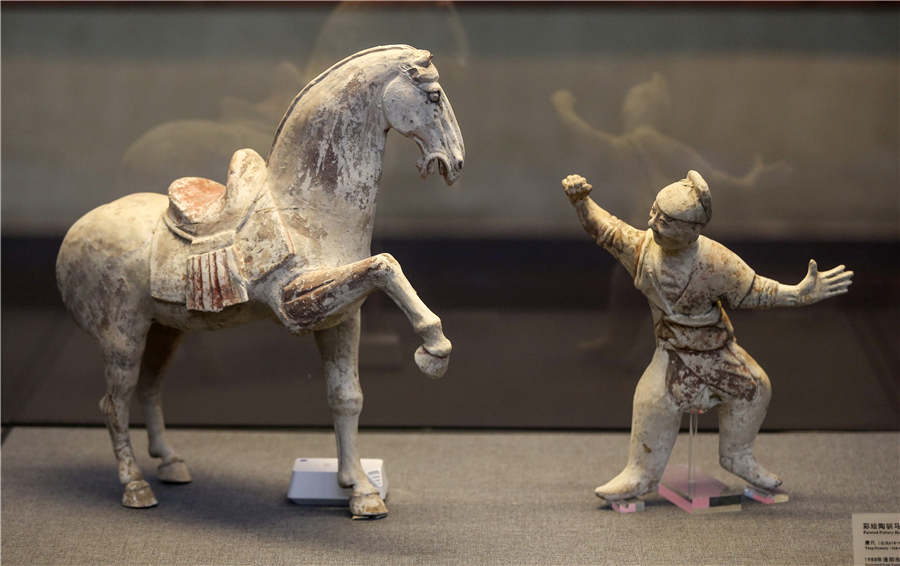
The Chenghan Terracotta Figurines were unearthed in the Chenghan Tombs at Huanhou Alley, Chengdu city. Along with the terracotta figurines, there were also terracotta musicians, ceremonial staff and porters, calendar bricks, ceramics, goldware, coins, and rings. These burial objects also indicate the high status of the person buried.
The appearances of the terracotta figurines seem to be strange. The persons they depicted have protuberant eyes, wide lips, and big ears. Also, they usually wear a hat and held an object in their hands. The most attractive one shows the scene that a person was blowing the whistle. According to experts’ research, the strange appearances may be related to their religious belief or the image of Cong Nationality.
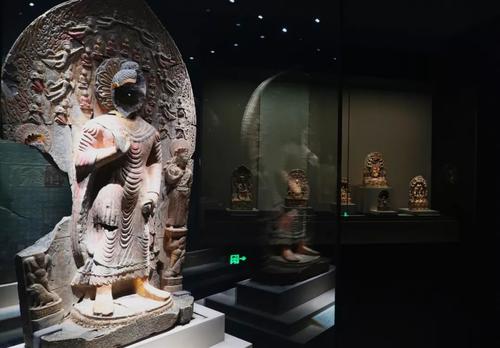
The Buddhism Statue in the Southern Dynasties (420-589) was unearthed at the Business Street of Chengdu. It is 24.4cm long, 10.5cm wide and 40cm high. A Buddha, four Bodhisattvas, four disciples, two strong men, and two lions are engraved on the front of the statute. The two Buddhist guards are respectively engraved on the left and right sides.
The Buddha at the key position wears a polished steamed-bun-shaped topknot and halo, a robe inside, a tie in front of the chest, and a double-collared drooping kasaya (a kind of Buddhist costume). The Buddha stands barefoot on the lotus-shaped platform, holding an object in the left hand and Abhaya mudra (a gesture to make people calm down and brave) in the right hand.
On both sides of the Buddha, there are two Bodhisattvas on each side. Each of them wears a precious crown, a round necklace, and an X-shaped shawl that crosses at the jewelry in front of the abdomen. The upper part of the body is bare while the lower part is dressed in a long skirt.
The basso-relievo of the four disciples is engraved on the mandorla (a soft light surrounding the engraved figures) between the Buddha and Bodhisattvas. The strong men are carved on the pedestal in the front of two outer Bodhisattvas, holding a vajra (a solid instrument that can defeat any demons) in the hands.
Behind the Buddha and Bodhisattvas, there is a lotus-petal-shaped mandorla, above which are the basso-relievo of the Buddha preaching his doctrines and Apsaras (the goddess flying in the sky). The Buddhist guards engraved at both sides of the mandorla wear a hood with their hands holding a stick-shaped object and standing barefoot.
The Ding Kiln White Porcelain Baby-shaped Pillow was made in the Song Dynasty (960-1279). The surface of the porcelain pillow is 25.5cm long and 15.5cm wide while the bottom of the pillow is 18.6cm long and 10.6cm wide. Its height is 12.8cm.
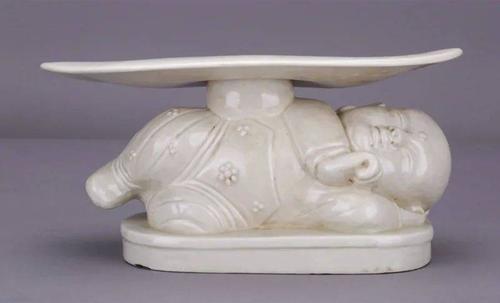
The porcelain pillow presents a lively scene of a sleeping baby. The baby dressed in flower-pattern bellyband lies on his side on the couch, sleeping with his head on the left hand, his right hand on the chest and his feet crossed.
The pillow presents such a vivid figure with a full forehead and chubby cheeks. Besides, the white porcelain is featured with fine and smooth quality. All these elements are incorporated together to present the feelings of warmness and gentleness.
The porcelain pillow was one of the bedding in summer in ancient times, which was first appeared in the Sui Dynasty (581-618) and became popular during the Tang (618-907), the Song (960-1279) and the Yuan (1271-1368) Dynasties.
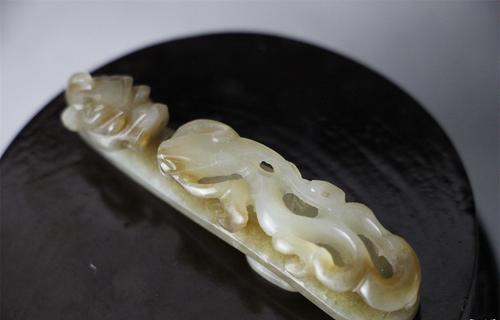
The Jade Belt Hook of Dragon Teaching Its Son was made in the Ming Dynasty (1368-1644) and unearthed at Mengzhuiwan, Chengdu. Its length is 11.9cm and its width is 2.3cm. Themed by Dragon Teaching Its Son (“dragon” is a legendary creature in Chinese myths and is the symbol of auspiciousness), the jade belt hook was made of quality jade with exquisite craftsmanship and ingenious design. The bigger dragon represents the father and the smaller one represents the son, which tells the visitors the importance of family education.
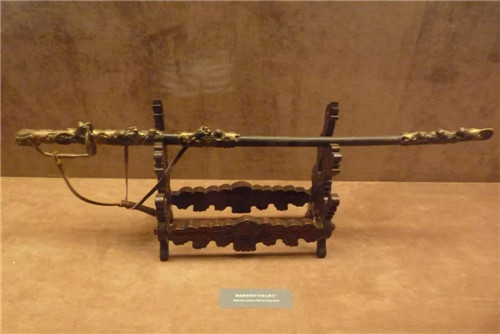
Liu Xiang, the then governor of Sichuan Province in 1937, led the army to fight against the invaders in the War of Resistance against Japan (1931-1945). Liu Xiang’s Saber is a Grade Three cultural relic (the highest grade is Grade One). It reminds visitors of the history and the contributions of the Sichuan armies.
During 1937-1945, more than three million soldiers and officers from Sichuan Province were dispatched to the war field, contributing over 20 percent to the overall military strength. They participated in 22 large battles against Japanese armies as well as expeditionary battles in India, Myanmar, and Western Yunnan. The casualties of Sichuan armies and Sichuan native soldiers and officers were also topped first among the provinces in China.
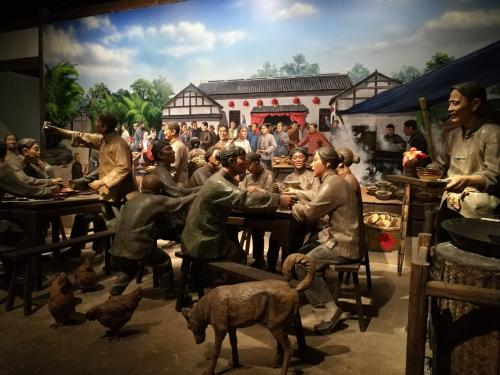
The Yard Banquet, the most characteristic form of the folk banquet on the Chengdu Plain, is also the symbol of neighborly relations. In rural areas, whether there are happy events or funeral affairs, people in the area always invite their relatives, friends, and neighbors for dinner. The banquets are mostly held at the yard, that is why the local people call it “Baba Banquet” (“Ba” in Sichuan dialect refers to “yard” in English).
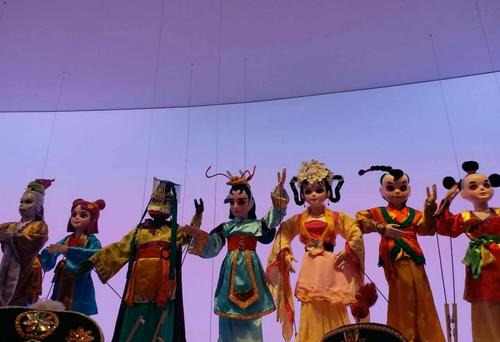
Marionette, also called Stringed Puppet or Stringed Kuilei, is a rare traditional play in China. The puppet play is mainly distributed at Quanzhou, Fujian Province, and Heyang, Shaanxi Province today. Heyang Stringed Puppet Play, which first appeared in the Han Dynasty and became popular in the Tang Dynasty, still plays an active role up to now.
There are silk threads tied with the important parts of the puppet such as the head, back, belly, arms, palms, and toes. The silk threads can drive the important parts so that the puppet looks more vivid. This female puppet is featured with a wide forehead, a round chin, long eyebrows, and a small mouth. These appearance features are passed down from generation to generation, along with the carving arts of the Sui and early Tang Dynasties.
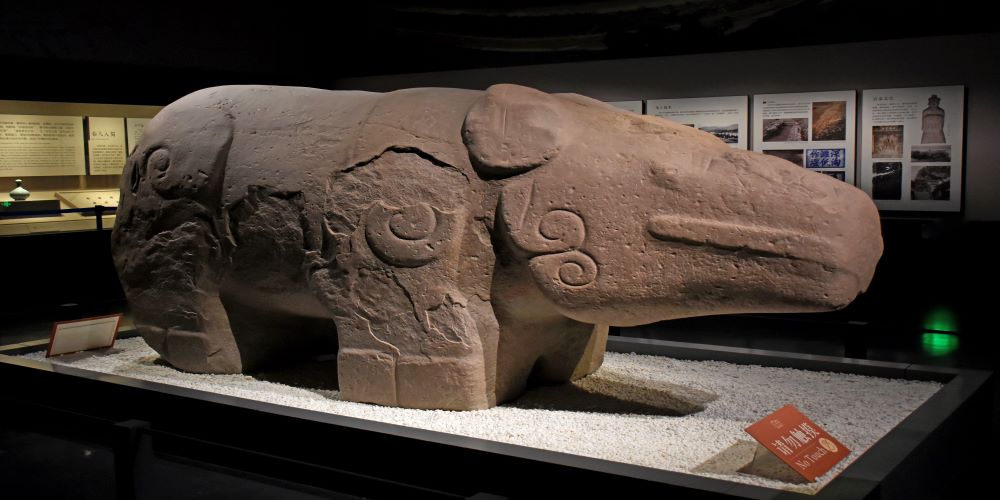
According to the historical records, Li Bing, who took charge of the Dujiangyan Water Conservancy Project (one of the greatest water conservancy projects) in ancient China, made five stone rhinoceroses for preventing the flood. Two of them were put into the river. Hundreds of years passed, many people only know the stone rhinoceros can help avoid the flood but do not understand how it works.
The most popular opinion is that the stone rhinoceros is a legendary creature in charge of water so it can stop the flood. However, it is a misunderstanding. The stone rhinoceros is a tool for measuring the water level. Through observing the water level rising or descending, people could know how to respond to it.
This story is about one of the shadow play collections, which tells the love story between a man named Xu Xian and a white snake named Bai Suzhen, also known as Bai Niangzi. This story was performed in the form of shadow play which was collected by Chengdu Museum. Bai Suzhen had a strong desire to be a goddess but the last thing she needs to do is to repay Xu’s kindness because Xu Xian saved her life when she was a snake.
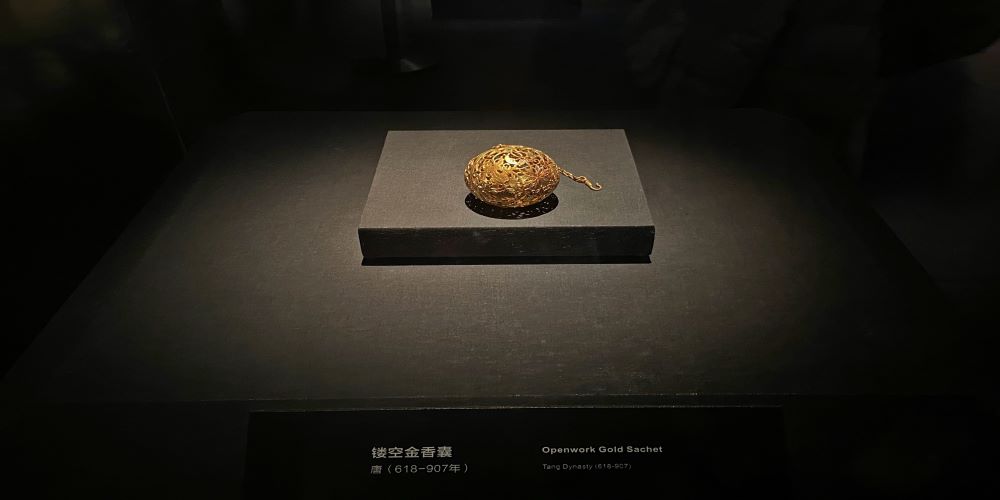
During this period, Bai Suzhen fell into love with Xu Xian and they got married. They loved each other deeply and lived a happy life, but their love was not allowed because they were different species, and snakes were regarded as the bad. A monk named Fa Hai thought they broke the ethic, so he took Xu Xian to the Jinshan Temple by violence and forced him to be a monk for confessing his fault.
To rescue her husband, Bai Suzhen and her sister, a green snake named Xiao Qing, asked the Water Gods for help to fight against the Four Heavenly Kings who were invited by Fa Hai. The Water Gods incurred a flood to the temple which resulted in many casualties. Xu Xian stopped them because he was unwilling to hurt anyone and that’s not what Bai Suzhen should do to be a goddess. At last, the two parties stopped this fight. Bai Suzhen volunteered to be imprisoned under the Leifeng Pagoda for atonement and Xu Xian stayed at the Jinshan Temple.
Rescue Insignia
The Rescue Insignia is one of the collections in Chengdu Museum, donated by Mr. Chen Canpei. It is not a magic note in Chinese folklore but an identity certificate for a friendly foreign force in wartime. Its origin dates back to World War II. During that period, an American Volunteer Group named Flying Tigers participated in the fight against Japanese invaders in China. The Guomindang government (the governing party in China during that period) specially made rescue insignia for them in case that members of Flying Tigers get into trouble due to the different languages.
The rescue insignia can serve as both identity certificates and rescue applications. It is usually sewed on the back or lining of the clothes and indicates the identity of the pilot. If the pilots survived the air crash or parachuting, the rescue insignia could help the local people and soldiers confirm their identities and give them a hand in time. It is really an interesting and useful design in wartime.
Enter from the Entrance → Temporary and Special Exhibitions at the First Floor → Man and Nature: Donations from Kenneth E. Behring Exhibition and Temporary Exhibitions at the Basement Floor → Permanent Exhibitions at the Second, Third, Fourth and Fifth Floors → Exit
Take bus 13, 30, 43, 47, 64, or 78 and get off at Xiyujie Station. After getting off, you need to walk eastward about 100 meters along the Xiyujie(Xiyu Street), turn left, walk about 60 meters along the Renmin Nanlu Yiduan(first section of Renmin South Road) to the destination.
Take Metro Line 1 or 2, get off at Tianfu Square Station, and exit West 1. The walk route to Chengdu Museum is same with the walk route after getting off the bus above.
Chinese: 请带我去成都博物馆。English: Please take me to Chengdu Museum.
If you go to Chengdu Museum from the center of Chengdu (Celebrity City Hotel), it takes about 8 minutes (about 10 yuan).
If you go to Chengdu Museum from Chengdu Railway Station, it takes about 20 minutes (about 15 yuan).
If you go to Chengdu Museum from Chengdu East Railway Station, it takes about 30 minutes (about 25 yuan).
If you go to Chengdu Museum from Chengdu West Railway Station, it takes about 30 minutes (about 30 yuan).
If you go to Chengdu Museum from Chengdu South Railway Station, it takes about 25 minutes (about 30 yuan).
If you go to Chengdu Museum from Chengdu Shuangliu International Airport, it takes about 40 minutes (about 50 yuan).
